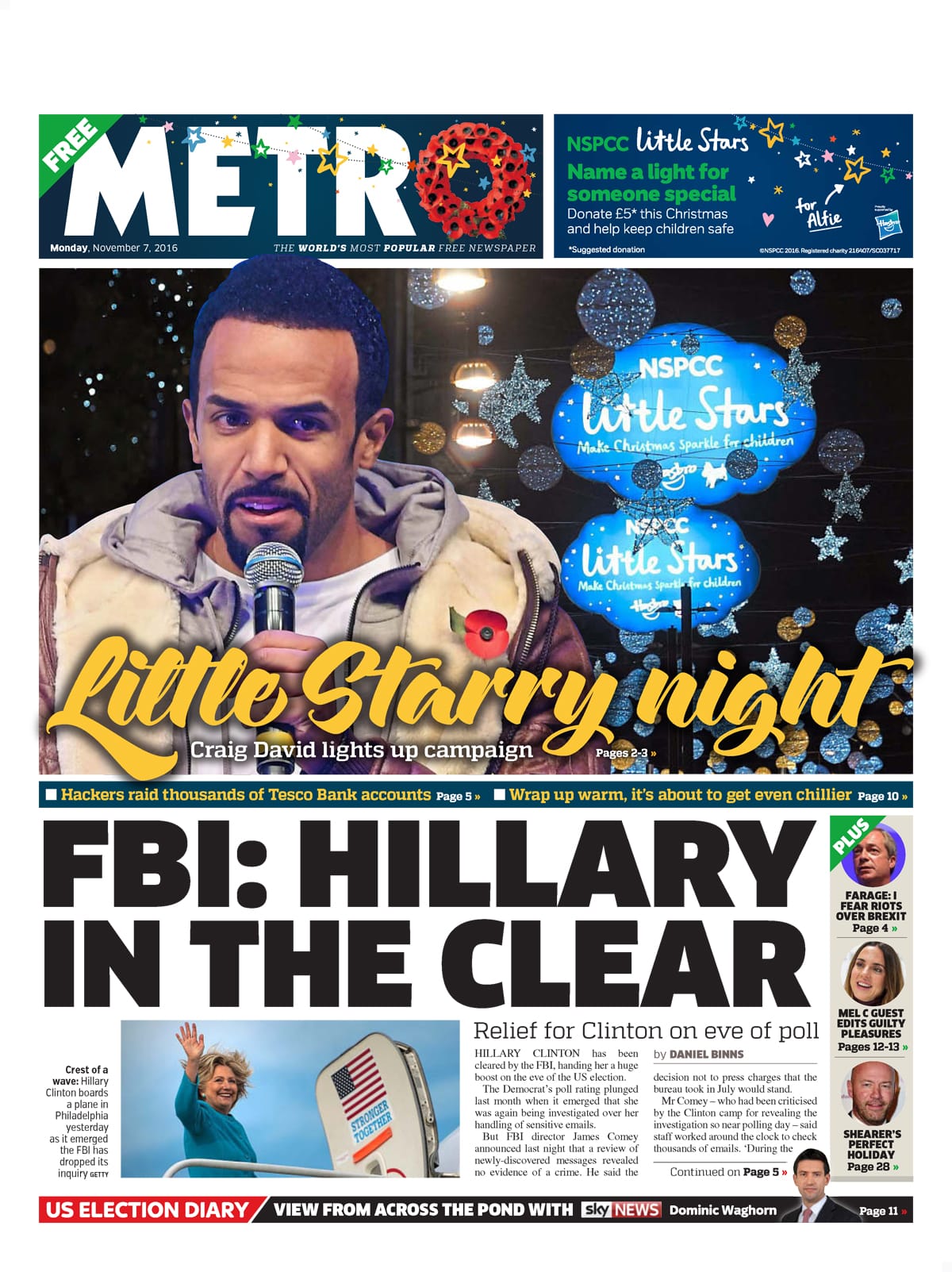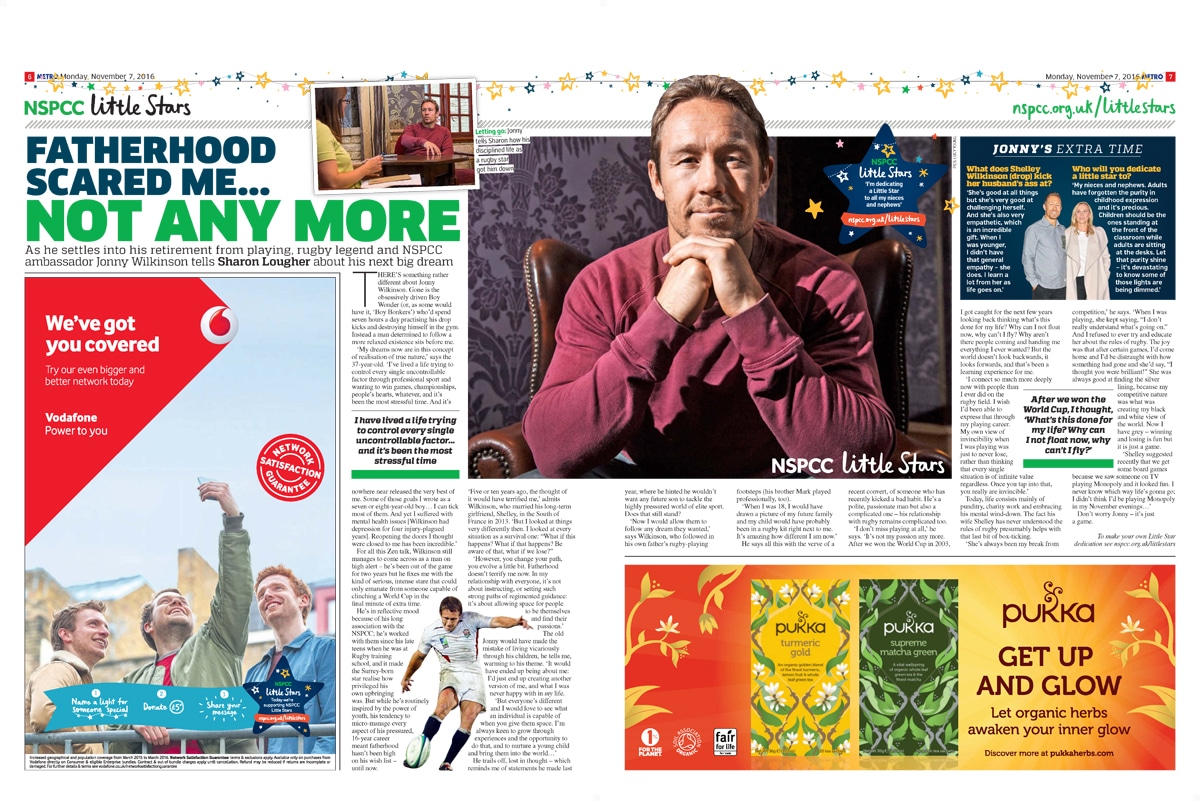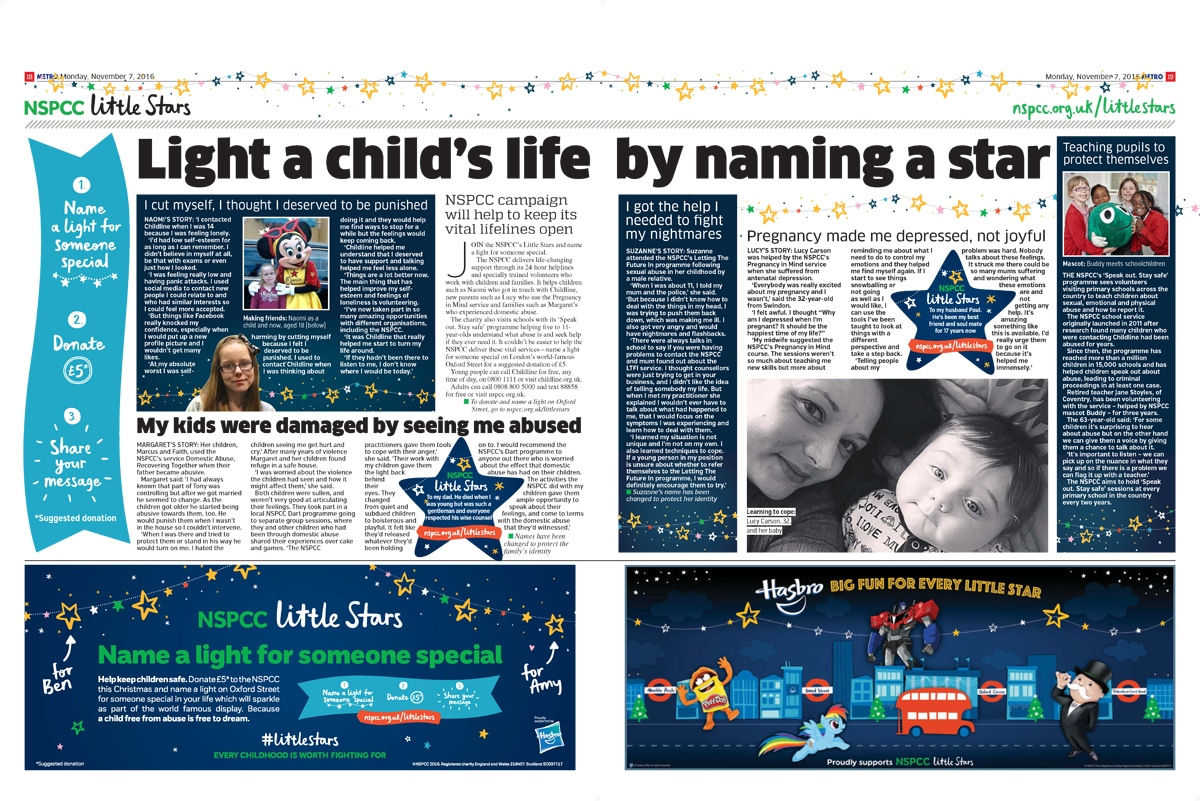Case study – Objective: Education & understanding
Over the last 10 years, support for the NSPCC has fallen. People know the charity exists but awareness of its services was at an all-time low before the NSPCC’s Little Stars campaign was born.
With the aim of ’switching on’ Christmas and creating a positive campaign message, the NSPCC became the first charity to take over Oxford Street’s festive lights, with each light available to sponsor and dedicate to a loved one.
The switch on coincided with a celebrity and advertiser takeover of Metro, featuring NSPCC lights throughout the pages. Metro collaborated with advertisers to create bespoke ad copy and 10% of the advertising revenue from the edition was donated to the NSPCC. MailOnline mirrored the content and drove digital scale with HPTOs and native video placements.
The newsbrand content was supported by a full domination of Oxford Street – the switch on event, posters on buses and the tube, and retailers selling Little Stars pin badges, plus a radio presence. In addition, Oxford Street was geo-fenced with Weve and Snapchat, allowing visitors to use bespoke filters to be part of the campaign.
Key findings
- 58% of Sun readers recalled seeing the British Heart Foundation ads
- 23% said that they would consider donating to the British Heart Foundation as a result of the ads
- 21% of readers talked about the ads with friends and family
- Post-campaign, the British Heart Foundation increased its spontaneous awareness by 13%
The chair’s award this year goes to a campaign that had fantastic audience insight, really clever use of context, amazing creativity and was not just in news brands but took an omnichannel approach.
Zaid Al-Qassab, chief brand and marketing officer, BT Group




